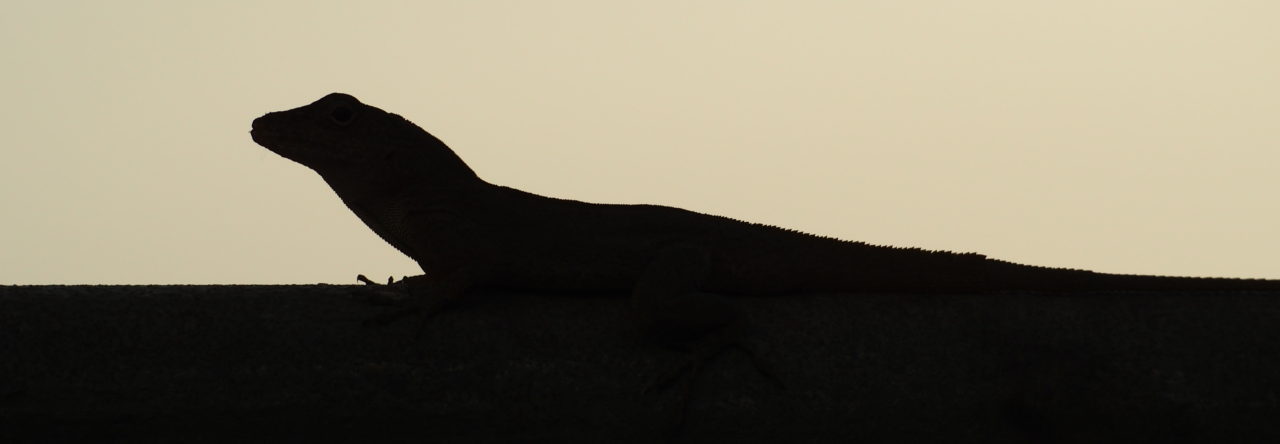Almost anyone who cares about anoles in the US is aware of the hypothesis that the arrival of brown anoles (Anolis sagrei) into Florida has driven declines in the abundance of native green anoles (A. carolinensis). Though there is certainly evidence that this hypothesis may be valid to some extent, we’ve previously wondered if the decline is as severe as folks seem to think it is. Have green anoles instead simply shifted to higher perches where we don’t see them as often? An informal mark-recapture effort conducted in Gainesville FL suggests that green anoles may in fact be quite abundant, and based on the evolutionary history of green and brown anoles across their ranges, we do in fact expect green anoles to shift upwards where they co-occur with brown anoles.
We now have yet another piece of evidence that green anoles may be thriving at the tops of trees , just out of sight. Because of Hurricane Irma, which wreaked havoc across Florida last week, many of those tree canopies have fallen to the ground. And Miami herpetologist Steven Whitfield reported yesterday seeing “more green anoles in the past two days than I have in the two months before that.” This observation was confirmed by other local biologists as well, in comments on Whitfield’s initial Facebook post that said “Green anoles are all over the place. Seems they were around up in the canopy, but now the canopy is on the ground so they’re easy to see.”
- Field Assistant Needed for Anolis Research in Florida! - March 4, 2020
- Are Brown Anoles in Florida Really Driving Green Anoles to Extinction III: A Post-Irma Update - September 15, 2017
- Evolution 2017: Spatial Structuring of Urban Green Anoles - June 30, 2017



James T. Stroud
An interesting question that arises from seeing these carolinensis in the fallen canopy branches is that why are they still there? It’s now been a week since those branches have fallen, yet any close investigation will still yield individuals. There are plenty of trees still standing which would provide those lizards with avenues on which to retreat to the crown (often including the tree from which the branch has fallen). Perhaps a reluctance to leave the structural home range? Chemical signalling on the environment?
Ambika Kamath
That’s so interesting! Will be fascinating to observe if and when they return up high…